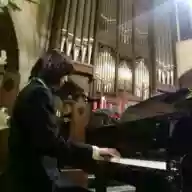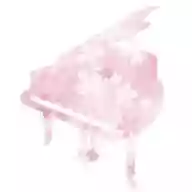[For Beginners] Recommended Ghibli Masterpieces You’ll Want to Play on the Piano
Studio Ghibli has produced numerous animated films that represent Japan.
Alongside their moving stories, many unforgettable songs have been born.
Not only the theme and insert songs, but also the background music that plays throughout the films is memorable, and many people may find themselves recalling the music together with iconic scenes—and perhaps wanting to try playing it on the piano at least once.
Many pieces from Studio Ghibli’s works are perfectly suited to the piano.
In this article, we introduce Ghibli pieces recommended for piano beginners.
Start your piano journey with your favorite song!
- [Disney] Playable even if you’ve just learned Do-Re-Mi! A selection of iconic songs from beloved Disney animations
- Disney Classics on Piano: A Curated Selection of Easy Pieces, Perfect for Recitals
- [Anisong] Easy for Piano Beginners! Recommended Practice Pieces
- [For Beginners] I Want to Play These on Piano! Recommended Anime Songs Compilation
- Recommended anime theme songs for children: timeless anime song classics you should listen to at least once.
- Pick up famous and popular anime songs! Along with piano solo
- [Piano × Vocaloid] A selection of recommended songs that are easy for beginners to play
- Disney songs to listen to at Christmas: a collection of classics that color the holiday season
- Songs from Castle in the Sky (Laputa): the theme song and insert songs.
- [Children's Song] Easy for Piano Beginners! Introducing Songs with Simple Chords
- You can instantly spot the most popular anime among kids! A collection of works that elementary schoolers are crazy about.
[For Beginners] Recommended Ghibli Masterpieces to Play on Piano (11–20)
Fine On The OutsidePriscilla Ahn

Many listeners must have been moved by the crystalline vocals and acoustic resonance.
The theme song for the film “When Marnie Was There” is a deeply personal piece that Priscilla Ahn, its writer, created in 2005 based on her own experiences of loneliness during her girlhood.
While pretending to be fine on the outside, the protagonist Anna quietly carries a sense of isolation, and the song aligns with her feelings beautifully, striking straight to the heart.
The track is also included on the album “Just Know That I Love You.” To convey the bittersweet melody with rich emotion, the key is to begin playing with a soft, delicate touch.
By letting the quiet, hidden feelings surface in the sound, your performance will resonate deeply with listeners.
Round Dance of the Sunflower HouseJoe Hisaishi

This piece, inspired by the “House of Sunflowers” that appears in the film Ponyo on the Cliff by the Sea, features a tender, compassionate melody that resonates with the heart.
Included on the album Ponyo on the Cliff by the Sea: Image Album released in March 2008, the track gently portrays the calm everyday life at the twilight of one’s years and the bittersweet wishes quietly held within it.
Its beautiful rondeau-like motif and clear, pure vocals warmly embrace the profound theme of the brilliance of life.
When playing it on the piano, try to spin the notes as if singing the melody, with a sense of care and affection.
Deeply connected to the story, this work is perfect for those who want to take their time and play a beautiful piece with heartfelt emotion.
Main themeHoshikatsu

This is the music from the film Only Yesterday that evokes memories from long ago, as if they spring vividly to life in the protagonist’s heart.
Released in July 1991, the film uses this beautiful melody to accompany the inner landscapes of a 27-year-old woman as she recalls her 10-year-old self.
Featured on the album Only Yesterday Original Soundtrack, the piece is characterized by a quiet, nostalgic tone centered on piano arpeggios.
With its relaxed tempo and gentle movement, it’s approachable even for those new to the piano.
Cherish the clear, shimmering resonance—as if fragments of memory are sparkling—and play each note with care.
Someone at any timeRed Dragon

This is the song that graces the ending of the 1994 film Pom Poko, with a melody that feels nostalgic and warm, resonating in the heart.
The acoustic, borderless sound—featuring instruments like the sanshin banjo—gently envelops the film’s finale.
The piece carries a message of not forgetting the places you hold dear even when you leave your hometown, and a hope that hardships can one day be overcome—echoing the raccoons’ story and touching the heart.
It’s a calm ballad, so the key is to play in a way that lets the melody sing.
Since the melody and accompaniment are clearly defined, it’s perfect for those who want to get used to playing with both hands.
Let the warm chords ring out carefully and try to express the original track’s comforting, embracing feel.
Hanyu no YadoEnglish folk song

An insert song from Studio Ghibli’s film “Grave of the Fireflies,” whose gentle, faintly nostalgic melody sinks deeply into the heart.
Ever since the film’s 1988 release, many people may remember it as the music that plays in scenes symbolizing the days the brother and sister spent together.
The song’s theme—“No matter how humble the house, home is best”—is deeply intertwined with the story, softly speaking of a longing for the lost calm and a tender love for family.
Because of its relaxed tempo, playing without haste and cherishing each note leads to a beautiful resonance.
If you perform while imagining the story woven into the melody, it will surely reach the listener’s heart.
Love is a flower, and you are its seed.Amanda McBroom

Many people were likely moved by the deeply resonant vocals that play over the ending of the film “Only Yesterday.” The song is widely known through Bette Midler’s performance and won a Golden Globe in 1980.
While comparing love to harsh things like a river and a knife, it ultimately portrays it as a hopeful flower—a truly wonderful, universal message.
The melody line is exceptionally beautiful, so even with simple accompaniment, you can fully savor the warm world the piece embodies.
The key is a relaxed tempo, playing the melody with tenderness.
By putting your heart into each and every note, you’ll create a rich performance that resonates deeply with listeners.
[For Beginners] Recommended Ghibli Masterpieces to Play on Piano (21–30)
Ask me why (A Mother’s Thoughts)Joe Hisaishi

This is the theme song from Studio Ghibli’s feature-length animated film The Boy and the Heron, which can be called the culmination of director Hayao Miyazaki’s work.
It is performed tenderly on a solo piano only three times during important scenes, from the opening to the late stages of the film, with no arrangements or variations for other instruments, making it clear how deeply composer Joe Hisaishi cherishes this piece.
If you listen closely, one note in the chorus melody differs from Ask Me Why (Mahito’s Resolve).
Just as Mahito returns with the stone and retains his memories of the experience, he has indeed changed from before to now.
It feels like a deliberate, meaningful misalignment.
The characters’ emotions are conveyed through live performance, as if opening the door to the heart.







